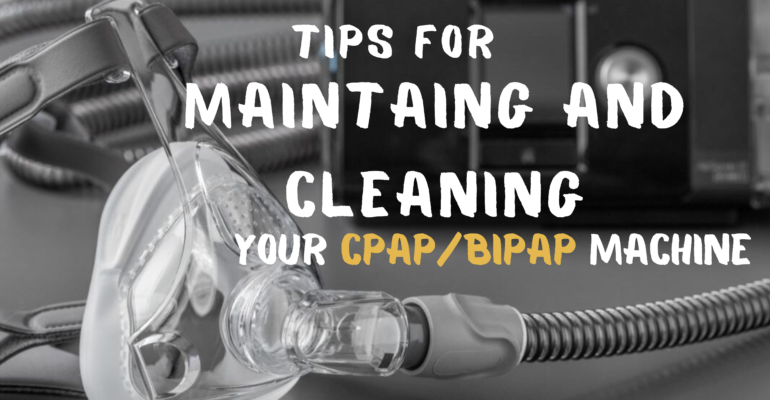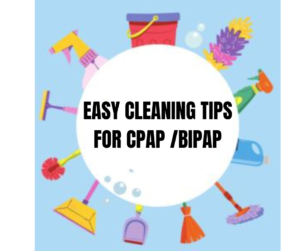WHY CPAP AND BIPAP CLEANING IMPORTANT ?
July 23, 2024 2024-07-30 18:33WHY CPAP AND BIPAP CLEANING IMPORTANT ?

WHY CPAP AND BIPAP CLEANING IMPORTANT ?
Continuous Positive Airway Pressure (CPAP) and Bilevel Positive Airway Pressure (BiPAP) devices are essential for individuals with sleep apnea and other respiratory conditions. These machines help maintain open airways during sleep, improving breathing and overall health. However, the effectiveness and safety of CPAP and BiPAP therapy are heavily dependent on regular and proper cleaning of the devices. In this guide, we will discuss why cleaning is crucial, the potential risks of neglecting it, and the best practices for maintaining these vital machines.
Why Cleaning CPAP and BiPAP Devices is Crucial
- Preventing Infections and Illnesses
- Bacterial and Viral Growth: CPAP and BiPAP machines, especially the humidifiers and masks, can become breeding grounds for bacteria, viruses, and fungi if not cleaned regularly. Moist environments are particularly conducive to microbial growth, leading to respiratory infections and other illnesses.
- Mold and Mildew: The presence of moisture can also encourage the growth of mold and mildew, which can cause severe allergic reactions and respiratory issues.
- Maintaining Device Performance
- Efficient Airflow: Accumulation of dust, dirt, and debris in the air pathways and filters can impede airflow, reducing the efficacy of the therapy. Regular cleaning ensures that the device operates at optimal performance.
- Longevity of the Device: Proper maintenance and cleaning can significantly extend the lifespan of CPAP and BiPAP machines, saving money on repairs and replacements.
- Enhancing User Comfort
- Odor Prevention: Unclean devices can develop unpleasant odors due to bacterial and mold growth, making the therapy uncomfortable. Regular cleaning helps keep the machine smelling fresh and pleasant.
- Skin Health: Contact with dirty masks can cause skin irritation, rashes, and other dermatological issues. Keeping masks and headgear clean ensures better skin health and comfort.

Potential Risks of Neglecting Cleaning
- Respiratory Infections
- Breathing in air contaminated with bacteria, viruses, and mold spores can lead to respiratory infections such as pneumonia, bronchitis, and sinusitis. Individuals with compromised immune systems are particularly at risk.
- Allergic Reactions
- Mold and mildew can trigger allergic reactions, including sneezing, coughing, congestion, and more severe asthma attacks in susceptible individuals.
- Reduced Therapy Effectiveness
- Clogged filters and air pathways reduce the pressure and airflow delivered by the device, diminishing the effectiveness of the therapy and potentially worsening sleep apnea symptoms.
Best Practices for Cleaning CPAP and BiPAP Devices
- Daily Cleaning Routine
- Mask and Cushion: Clean the mask, cushion, and headgear daily with warm, soapy water. Use mild, non-fragrant soap to avoid irritation and thoroughly rinse and air dry them before use.
- Humidifier Chamber: Empty the water chamber daily, rinse it with warm water, and let it air dry. Refill with distilled water to prevent mineral buildup.
- Weekly Cleaning Routine
- Tubing: Soak the tubing in warm, soapy water at least once a week. Rinse thoroughly and hang it to air dry completely before reattaching it to the machine.
- Filters: Check the filters weekly and clean or replace them as needed. Disposable filters should be replaced according to the manufacturer’s recommendations, while reusable filters can be rinsed and air-dried.
- Humidifier Chamber: In addition to daily rinsing, give the humidifier chamber a thorough cleaning with warm, soapy water once a week. Some chambers are dishwasher-safe but always check the manufacturer’s instructions.
- Monthly Cleaning Routine
- Machine Exterior: Wipe down the exterior of the CPAP or BiPAP machine with a damp cloth. Avoid using harsh chemicals that could damage the device.
- Deep Clean: Consider using specialized CPAP cleaning solutions or devices for a more thorough monthly cleaning. These can help sanitize and disinfect components more effectively.
- Replacement of Parts
- Mask and Cushion: Replace the mask and cushion every 3-6 months, or as recommended by the manufacturer.
- Tubing: Replace the tubing every 3-6 months to ensure optimal performance.
- Filters: Replace disposable filters every month and reusable filters every 3-6 months, or as needed.
Additional Tips for CPAP and BiPAP Maintenance
- Avoid Harsh Chemicals: Use mild soap and avoid bleach or alcohol-based cleaners that can damage the components and cause irritation.
- Regular Inspections: Routinely inspect the device and its parts for signs of wear and tear. Replace any damaged or worn-out parts promptly.
- Follow Manufacturer Guidelines: Always adhere to the manufacturer’s cleaning and maintenance instructions to avoid voiding warranties and ensure proper care.
Conclusion
Regular cleaning and maintenance of CPAP and BiPAP devices are essential for preventing infections, maintaining device performance, and ensuring user comfort. By following a consistent cleaning routine and replacing parts as needed, users can maximize the benefits of their therapy and protect their health. Prioritizing cleanliness not only enhances the effectiveness of the therapy but also contributes to a safer and more comfortable experience.



